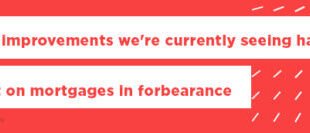When it comes to your mortgage, as little as a half of a percentage point can save you tens of thousands of dollars over the life of a loan.
So getting the absolute lowest interest rate when you refinance is critical.
These tips show you exactly what you need to do to make sure you get the best refinance rates on your loan.
Refinance Rates (December 2020) | ||
Interest rate | ||
30-year fixed-rate mortgage | ||
15-year fixed-rate mortgage | ||
5/1 adjustable-rate mortgage | ||
Rate Search: Check Today’s Refinance Rates
How to Get the Best Refinance Rates Possible
Improve Your Credit Score
Borrowers with excellent credit get the best rates and loan terms. Before applying to refinance your mortgage pull a copy of your credit report to check for any errors. You can get your credit report once a year for free from www.annualcreditreport.com.
- Dispute negative items on your credit report. If you find errors, you should dispute them with all three major credit bureaus. The credit bureau has 30 days to investigate the accuracy of the item and update the status.
- Pay down credit card balances – Your credit utilization ratio is the amount of available credit you are using. The higher your balances are to their credit limit; the lower your score will be. Pay down your card balances to less than 25% of your card’s credit limit.
- Don’t apply for new credit – When you apply for any credit or loan, the creditor will pull a copy of your credit history. This is called a hard inquiry and will negatively affect your credit rating. Wait until after you refinance your mortgage before buying a new car or getting a new credit card.
Consider a Shorter Loan Term
The shorter the loan term the lower the interest rate will be. You should compare 30-year fixed-rates with 15-year fixed-rates which can be as much as a full percentages point lower in some cases. A shorter term loan will allow you to pay off your mortgage sooner while paying significantly less in interest.
Longer Mortgage Term | Shorter Mortgage Term |
By getting a mortgage with a short loan term, you will get lower refinance rates than a long term loan. Refinancing to a 15-year loan could have a rate of a full percentage point lower than the rate on a 30-year fixed-rate loan. Your monthly mortgage payment will be higher, but a larger percentage of your payment will go to the principal balance.
Read more about the pros and cons of 30-vs. 15-yr fixed-rate loans.
Lower Your Debt
Paying off credit card debt not only increases your credit score, it also lowers your debt-to-income ratio (DTI ratio), which results in a lower refinance rate, and lenders will charge lower fees.
The maximum DTI ratio required to refinance a home loan is 43%. The higher this ratio is, the higher your interest rate will be. Lowering your DTI ratio will make your mortgage application less risky and allow the lender to lower your refinance rate.
Compare Rates with Multiple Lenders
Some fees, even the interest rate can be negotiated down. You can use one loan estimate to get a better deal from other lenders. When refinancing your mortgage there are closing costs of 2% to 5% of the loan amount. Get a loan estimate from at least 3-4 different mortgage lenders to compare the rate and closing costs.

Don’t make the mistake of refinancing your mortgage with your existing mortgage company or one of the first lenders you talk to. Refinance rates and closing costs will vary by lender. Compare loan offers from multiple mortgage companies to ensure you’re getting the best rates.
Shop and Compare Mortgage Rates
Compare Refinance Rates within 30 Days
Multiple inquires from the same type of lenders during a certain period is known as rate shopping. For mortgage rate shopping, you have a 30-day window to have as many mortgage companies pull your credit report, and it will only count as a single inquiry.
Some people choose not to apply with too many lenders because they’re afraid all the credit inquires will lower their credit score. That couldn’t be farther from the truth.
Lock in Your Mortgage Rate
When refinancing your mortgage loan, timing is everything. Knowing when the rates are at their lowest and when to lock in that low rate is extremely important. Working with your loan officer and responding quickly to any document requests allow a lender to lock in the rate at the right time.
Work with an Experienced Loan Officer
Believe it or not, having an experienced loan officer can help you get the best rate. An experienced loan officer knows when to lock in a rate, types of refinance options that may be best, and other tips and tricks to help you save money on your loan. An inexperienced loan officer could end up costing you in the end.
Types of Refinance Programs
Rate and Term Refinance
A rate and term refinance is a traditional refinance where your goal is to lower your interest rate and get a new loan term. If your interest rate is above 4%, it would be a good idea to see how much you can save by refinancing your loan.
- 620 credit score required
- Must be current on your payments
- No late payments in the last 6 months
Cash-Out Refinance
You may be able to tap into your home equity to get cash with a cash-out refinance. Cash-out refinancing pays off your existing loan and provides up to 80% of the home’s market value in cash. The loan is repaid over the term of the loan for an interest rate much lower than a personal loan or home equity loan.
- 210 waiting period
- 620 credit score required
- Borrow up to 80% of the loan-to-value ratio
Home Equity Loans
A home equity loan and home equity line of credit (HELOC) work similarly to a cash-out refinance. However, instead of refinancing your existing loan, you are using your home equity to get a second mortgage. Home equity loans generally have short terms of 5-10 years.
- Minimum 660 credit score
- Borrow up to 80% of LTV ratio
Streamline Refinance
If you have a government home loan such as an FHA loan or VA loan you may be eligible to refinance your mortgage with a streamline refinance. The streamlined process requires no income verification or credit check allowing you to refinance your mortgage easily and quickly.
- No credit check (Some lenders require a 580+ score)
- No income verification
- Little documentation required



